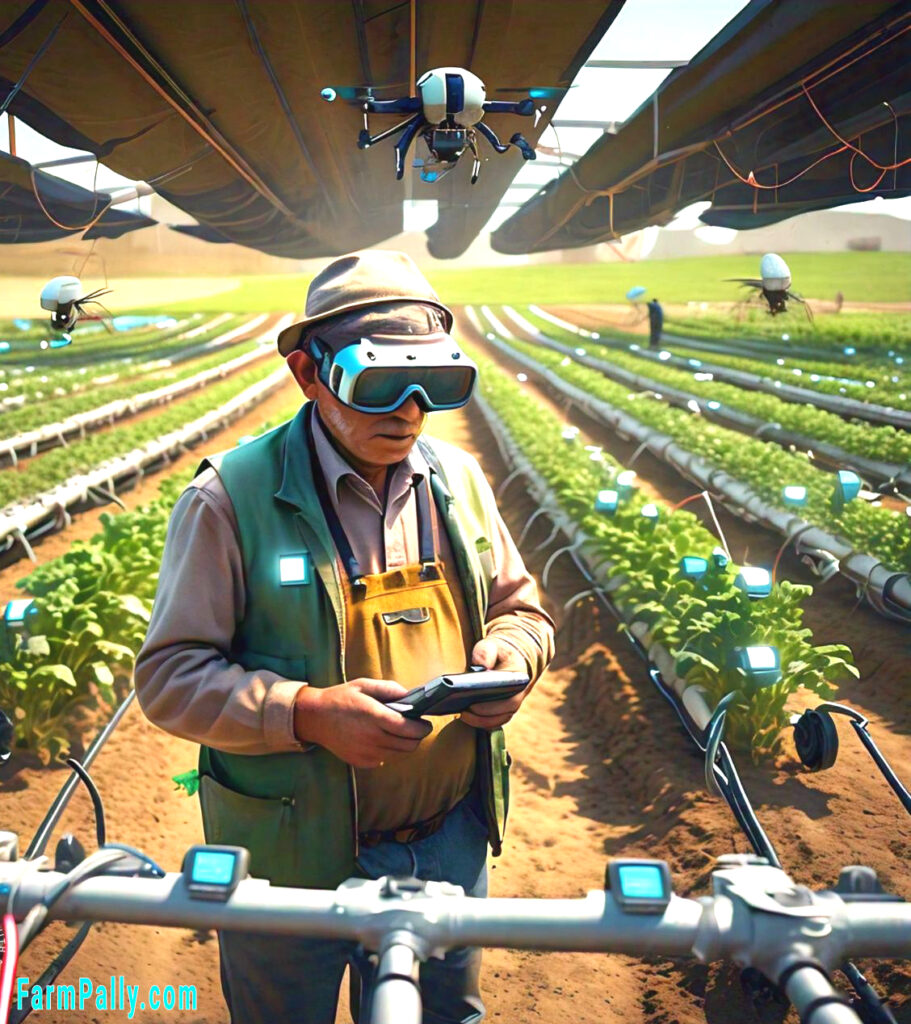Radio Frequency Identification (RFID) technology identifies an object by radio frequency without any contact.
It has been successfully applied in many industries like supply chain management, retail management, logistics management, security supervising, traffic supervising, and more.
How RFID is being used in Agriculture
Rfid technology constitute a farm monitoring system whereby farmers can now protect their crops from pests
Also, livestock such as cattle can be monitored using wireless sensor networks.
One common application is the scanning of codes printed on food packaging, linking the barcode to a food category or a certain batch.
This method of tracing is cheap and easy to carry out.
RFID is a great method for agri-food supply chain traceability.
RFID solutions, including tags for agricultural can help farmers overcome the common challenges that they face every day.
Similarly, livestock management has already made many strides by using RFID systems to help with remote monitoring of animals using dedicated hardware and software systems.
Application examples of RFID Technology
For example, Paramount Farms, the world’s largest suppliers of pistachios has been relying on RFID system for some time now to automate the processing of incoming shipments of pistachios from growers.
The company developed an efficient method of receiving, evaluating and paying for the nuts provided by its suppliers and this has improved the efficiency of the whole processes.
Similarly, marijuana growers are using RFID tags and RFID readers to streamline plant management.
A fully automated tracking system using RFID helps growers to maintain real-time tracking of the supply chain, tracking each plant all the way to point-of-sale, where taxes are calculated.
Advantages of RFID in Agriculture
One of the advantages of this agric technology is that it can be used to tag bales of hay.
These tags can store data such as the date of harvest, the field it was harvested from, the temperature, weight, moisture level and nutritional information of each bale.
These specialized RFID tags and tag readers can work without any contact.
They have a high recognition rate, store a bulk of data, have secured access and can be easily integrated into an existing system.
Data collection in greenhouses can also be done using these specialized RFID tags and readers to measure and record growth time, moisture content, equipment management, and even personnel management.
Limitations of RFID in Agriculture
In the USA, the Food and Drug Administration in 2012, had only sanctioned the use of RFID mainly for tagging citrus fruits in an effort for paperless marking method in horticultural production.
More studies are examining consumer behavior regarding marketability and possible changes in the taste of laser-marked fruits.
For food plants, the implementation of IT solutions to trace the plant-to-food chain by internal tags seems to be possible only in fruit trees due to the difficulties in labeling and tracking of herbaceous plants.
RFID tags are a safe tool to identify plants and foods that are protected by rights or subjected to specific regulations for plant identification.
It can be also used for studying plant pathologies such as viruses or phytoplasma monitoring.
One challenge in the market is security concerns associated with RFID tags for agricultural applications.
The process of encryption of data stored in RFID systems can be quite expensive. Also, the cost of RFID tags is higher when compared with other alternatives.
These are few of the disadvantages of RFID in farming but as modern farming is evolving, some of the constrains in using technology in managing farms would be dealt with.
Especially in terms of cost, so as to make the food security goal achievable and sustainable, most especially in the advanced economies.
Future of RFID in agriculture
The global RFID tags market for the agricultural sector is expected to give a CAGR of more than 11% from 2017 to 2021.
Strong governmental support to farmers to adopt smart agricultural practices and technologies can help achieve that number.
RFID devices can be integrated with Wi-Fi and RTLS that can assist farmers with traceability issues.
At present, advanced RFID semiconductor devices are being developed for a few customers.
These devices help in automating the farming process, making the farm more efficient, by managing the time, controlling access to the property, managing crop inventory, and offering better equipment maintenance.
RFID cannot work alone, but needs the use of big-data capable IoT software platform to collect, filter, store and analyze the farm data.
Growers are using new technology methods to deliver as many as five crops per year by tracking growing conditions such as sunlight levels, humidity, temperature, and soil chemistry.
The IoT platform can provide the growers with the ability to track these variables in real-time so that they can control and improve growing techniques.








